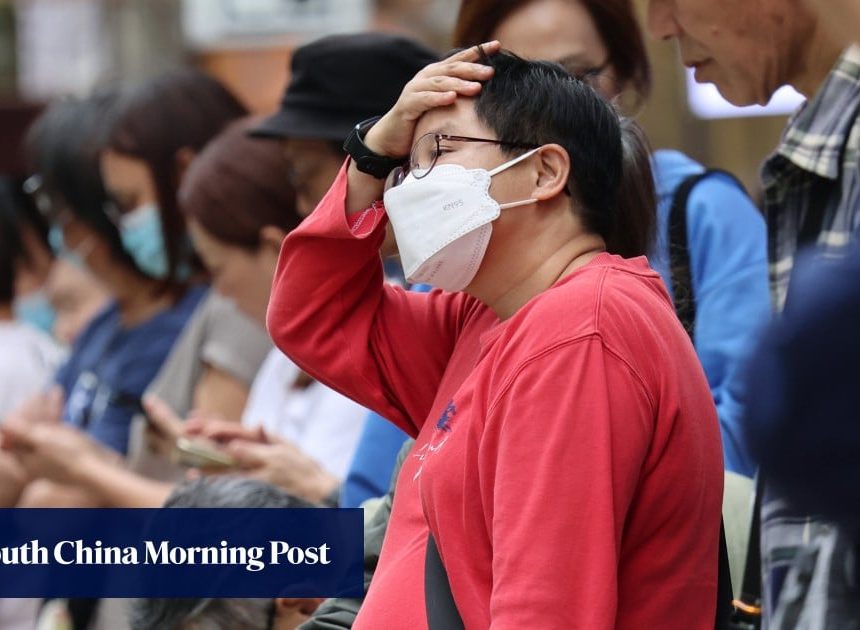Santa Barbara, California – On a warm Saturday afternoon in the town of Goleta, Aubrie Lugo, a local volunteer, walked down a suburban sidewalk with a stack of flyers.
It was her first time knocking on doors for a political campaign, but she said she felt compelled to get involved in the fight to pass a statewide measure known as Proposition 50.
Recommended Stories
list of 3 itemsend of list
“It feels like a dire situation,” Lugo said, as she eyed houses festooned with Halloween decorations. “We’re trying to fight the rigging of our democracy.”
Proposition 50 is a measure on the November 4 ballot in California, but its success or failure will have implications for elections beyond 2025.
The measure gives California voters a choice: whether or not to adopt a congressional map designed to net the Democratic Party five additional seats in the United States House of Representatives.
Proponents say the move is necessary to counteract similar Republican efforts elsewhere in the country. Opponents argue that Proposition 50 would strip California Republicans of their voice in Congress.
Both sides have framed their campaigns as a fight to uphold democracy and ensure fair representation.
The outcome of Tuesday’s vote is likely to weigh heavily on the 2026 midterm elections, where control of the House of Representatives is up for grabs.
President Trump’s Republican Party currently holds a slim majority in the chamber, and next year’s midterms are likely to serve as a referendum on his second term in the White House.
To help keep control of the House majority, Trump himself has successfully pushed for partisan maps to be drawn in Republican strongholds like Texas.
Designed as a response, the California ballot initiative has already generated widespread attention, pulling national figures into the state’s fight. Trump has berated the vote as “dishonest”, while his Democratic predecessor, Barack Obama, hailed its importance.
“This vote will have critical implications,” Obama said in a social media post in support of the measure. “Not just for California, but for our entire country.”

A response to Texas
California Governor Gavin Newsom first announced that Proposition 50 would go before voters in mid-August, arguing that Democrats could not afford to “unilaterally disarm” while Republican states pursue partisan congressional districts.
“We’re asking the voters for their consent to do midterm redistricting in 2026, 2028 and 2030 for the congressional maps, to respond to what’s happening in Texas,” Newsom said.
Texas was the inspiration for Proposition 50. In June, reports emerged that the Trump administration was quietly pressuring politicians in the southern state to revamp their congressional districts ahead of the pivotal 2026 midterm elections.
Each district elects its own representative to Congress. And in the House of Representatives, the margins are so tight that a handful of votes could buoy or doom a bill.
Republicans currently hold a narrow majority of 219 seats, just six more than the Democrats.
Fearing Democratic gains in the midterms, the Republican-led Texas legislature ultimately passed a new congressional map that was drawn to disadvantage Democratic voters and gain Republican seats.
Red-leaning states, including North Carolina and Missouri, have also moved forward with their own such efforts.
Many see California’s ballot measure as a test of whether Democrats are willing to counter Trump’s efforts to reshape the electoral landscape, even if it means adopting methods they might otherwise oppose.
“If the Democratic states don’t respond to what Texas did, all of the other Republican states are going to do the same thing,” said Doug Allard, a 77-year-old Goleta resident who voted in favour.
Pausing the nonpartisan commission?
In California, however, the state legislature cannot simply vote on a new congressional map.
That’s because, in the 2010 election, California voters assigned that task to a nonpartisan group called the Citizens Redistricting Commission, which draws maps with an eye for proportional representation.
November’s ballot measure would not eliminate the commission. But it would suspend its activities until 2030 and replace its existing map with a new version drawn by the legislature.
The result would be far fewer California Republicans elected to Congress.
“California had nine districts in the last election decided by a margin of less than seven points,” Samuel Wang, the director of the Princeton Gerrymandering Project, told Al Jazeera. “Our estimate is that, if Prop 50 passes, there will only be one district that is that close.”
The campaign in favour of Prop 50 has stressed the temporary nature of the change: The nonpartisan commission would resume its work in five years.
Newsom has also said that California will abandon the measure if Texas does the same with its partisan map.
Proponents also point out that California voters will get the chance to decide whether to adopt the new legislative map or not, something Texas voters did not do.
Those caveats are seen as important for attracting California voters who might normally see gerrymandering — the practice of drawing districts in a partisan way — as anti-democratic. California had previously touted the nonpartisan commission as an example of fair redistricting.

A national fight
Advertising campaigns, featuring national figures like Obama and US Representative Alexandria Ocasio-Cortez, have also sought to allay fears, positioning Proposition 50 as a necessary bulwark against a Republican power grab.
“Prop 50 levels the playing field and gives power back to the people,” Ocasio-Cortez said, framing the vote as a part of a “fight for democracy in all 50 states”.
But opponents fear the ballot measure would empower state and national politicians to manipulate voting districts to secure majorities at the expense of individual voters.
Experts like Wang also see California voters facing a trade-off: The measure embodies a tension between safeguarding fair representation at the local level versus the federal level.
“The argument is that it is of no use to have a fairly elected representative from your district if the deck is stacked against the policies you favour at a national level,” Wang said.
He observed that many of the discussions surrounding Proposition 50 hinge on issues of national politics, with supporters largely united in opposition against Trump’s policies.
“It appears to me that voters are looking at this through a national lens,” said Wang.

Tit-for-tat escalation
Some critics have also expressed concern over the risks of ever-escalating, tit-for-tat tactics between Democrats and Republicans.
Former California Governor Arnold Schwarzenegger, a Republican long involved in anti-gerrymandering efforts, is among the most prominent voices urging voters to reject Proposition 50.
“There’s this war going on all over the United States. Who can out-cheat the other one?” Arnold Schwarzenegger said during a recent TV interview.
“Texas started it. They did something terribly wrong. And then all of a sudden, California says, ‘Well, then we have to do something terribly wrong.’ And then now other states are jumping in.”
One path to help de-escalate the redistricting fight could be to pass nonpartisan reforms at the national level, according to Wang. Such reforms would prevent individual states from drawing maps in a way that slants the odds in favour of one party or another.
“There is abundant evidence that independent commissions draw fairer maps than legislatures do,” Wang said.
Democratic lawmakers have previously introduced legislation that would have made nonpartisan redistricting a national practice, but those efforts failed to attract Republican support. Rising tensions could make such an effort even less likely in the current political environment.
Earlier this week, the Trump administration said that it would dispatch federal officials to California to “monitor” the November 4 election for irregularities. Newsom called the announcement an act of voter intimidation meant to dampen the turnout and cast doubt on the results.
Trump has a long history of aggressively promoting conspiracy theories about “rigged” elections, particularly with regard to his own loss in the 2020 presidential race. That rhetoric was used to justify a series of aggressive efforts to cast out the election results.
Voters like Hank, a 77-year-old California resident who asked that his last name not be used, cited the Trump administration’s actions as their reason for voting “yes” on Prop 50.
“We can’t allow the current trend to dominate. Other states are gerrymandering, and our country is in too much of a crisis,” said Hank. “My concern is on a national level.”


